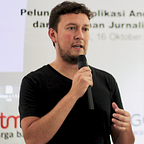2.3 Strategizing and Prioritizing Experiments
This post is part of the Growthzilla Book series, which is an online draft of the print edition that will be available in 2018.
When you model your business, you will likely find that there are many ways that you can potentially improve growth. On one hand, this is great news because you have many opportunities to grow your business. On the other hand, this is very challenging because you have two factors working against you: limited resources and a finite market size. Moreover, every change that you try will not work. This is why following a more scientific approach that includes forming hypotheses and measuring results is fundamental to growth science. Each experiment requires capital and human resources investment, and creating a well thought-out strategy and continually prioritizing experiments will be pivotal to your growth development efforts.
2.3.1 Brainstorm Growth Optimization Opportunities
As you begin to engineer your company’s growth, you will iteratively brainstorm new optimizations to try, create a strategy to guide your efforts, and constantly prioritize your growth experiments based on that strategy. Luckily, you have already created a framework that will help you to brainstorm and evaluate experiments. The customer journey map and growth model that you created will help guide your brainstorming. The journey map will highlight key actions in the customer interactions with your product and company, and can be juxtaposed with your growth model to understand how these actions affect overall customer and revenue growth.
In your initial brainstorm, your team can simply retrace the customer journey and write down one or two optimization ideas for each step. For example, what are the two things that you could try to help prospective customers register? How about two ideas for helping new customers get on-boarded? Next, you can repeat this exercise for each variable in your growth model. For example, what are the two things that your team can try to increase how often your customers use your product? By going over your customer journey map and your growth model, you should be able to compile a pretty solid list of potential growth experiments that you can try. The next step is to take a holistic look at that list of experiments and create a strategy for prioritizing them since you obviously can’t try them all at once.
As you start to implement the growth experiments in your pipeline, you can keep going back to the customer journey map and growth model to get new ideas. We will also cover common tactics for each stage in the customer lifecycle later on in the book to give your team a head start.
2.3.2 Create a Pipeline of Growth Experiments
The backbone of growth engineering is a pipeline of optimizations that teams typically capture as some kind of a list. Some teams prefer to create simple lists in text documents or spreadsheets, while others prefer to capture them in more structured tools such as project management software. The format does not matter, and you should use what works for the team. In fact, you’ll probably find that how you document your list will change with time. The key thing is to create a list potential experiments at the very beginning as well as continually adding to it and prioritizing optimizations. Your team should create a pipeline as soon as you have gone through the initial brainstorming exercise, which will give you a wealth of experiments to add.
2.3.3 Create a Strategy
After your team has developed a growth experiments pipeline, it is useful to create a framework to guide how you will be prioritizing experiments in the future. This strategy can be centered around topic areas such as new customer registration or around stages in the customer lifecycle such as customer retention. The strategy should help you group experiments in buckets, so you can work on areas intensively enough to realize gains to growth rather than skipping around from one area of opportunity to another, which makes it difficult to track progress.
For example, let’s imagine that your product is an online task management app. Rather than trying one optimization to improve the registration process, followed by another to improve creating a task, and followed again by an experiment to email inactive users, it might be better to focus on just customer retention and try three experiments aimed at helping frustrated customers find solutions to questions or problems. Alternatively, your strategy might be to focus on those efforts that your team has identified as having the greatest potential impact. By creating a strategy to guide how you will prioritize growth experiments, you will be enabling your team to focus their attention on solving one problem such as retention and focusing on one or two key metrics.
2.3.4 Continually Prioritize Growth Experiments
The areas where you place your efforts will shift with time. Whereas you might start by channeling most of your resources to retention and engagement initially, you will likely shift the balance more toward acquisition as you implement the most impactful fixes to your product and overall customer experience. Moreover, every product and business evolves, and new problem areas are likely to creep up. The key to efficiently engineering growth is to continually update your overall growth strategy and to vigilantly keep prioritizing your pipeline of experiments ensuring that you can efficiently improve growth with limited resources and time.
Be sure to check back tomorrow to learn about running successful experiments. New sections of Growthzilla are published every weekday.
